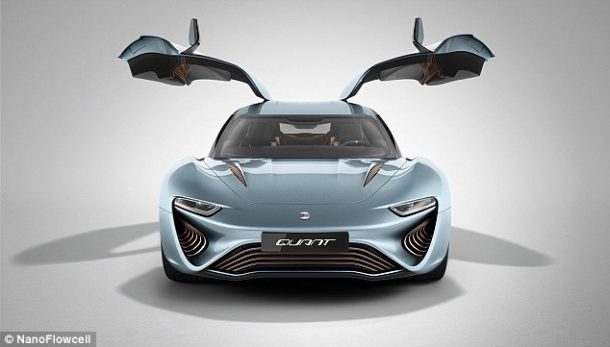Sports cars are infamous for being not environment-friendly and that’s the image that Quant e-Sportlimousine is planning to change. It has been designed so that it is capable of reaching a speed of 350km/h while utilizing saltwater as its fuel.

The unique drive system enables the car, which weighs in at 2300kg, to reach a speed of 60mph from rest in 2.8 seconds making it as fast as the McLaren P1. The saltwater car made its debut at the 2014 Geneva Motor Show in March and has been certified for use on European roads.
This particular car has a horsepower of 920 and makes use of electrolyte flow cell power system for running four electric motors that are housed within it. It works in the same fashion as a hydrogen fuel cell, however saltwater is used as the liquid for storing energy.
This saltwater is made to pass through a membrane located between two tanks, thus creating an electric charge. This electric charge is stored and distributed by employing super capacitors. It features two 200-liter tanks that allow the user to travel a total of 600km in one ride.
It features a full-length interactive dashboard and a wood-theme while also housing an Android-based system for entertainment. As of now, no price or sale date has been released, however our experts put it at over $1.7 million.
The company behind this amazing ride is NanoFlowcell AG and is based in Lichtenstein, Germany. It is planning to take the car out for a test on public roads in Germany and in Europe while also preparing for series production. According to the company, this technology allows five times the energy capacity of lithium-ion batteries that weigh the same.
NanoFlowcell AG Chairman of the Board Professor Jens-Peter Ellermann said, “We’ve got major plans, and not just within the automobile industry. The potential of the NanoFlowcell is much greater, especially in terms of domestic energy supplies as well as in maritime, rail and aviation technology.”
